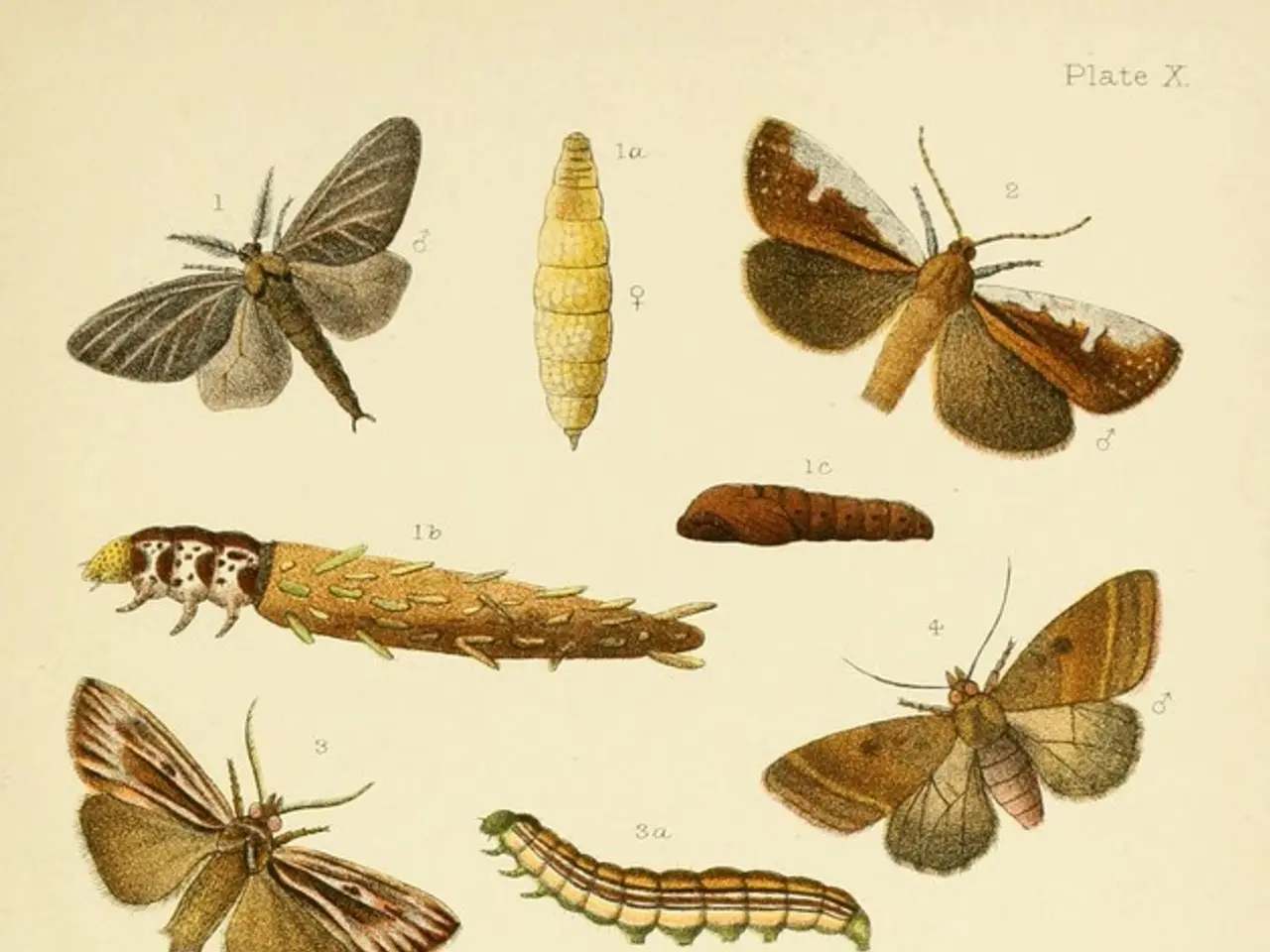Employing Moths for Interesting Scientific Exploration
Ahi Pepe MothNet: Uniting Science, Nature, and Culture in New Zealand
In the heart of New Zealand, an exciting citizen science initiative called Ahi Pepe MothNet is captivating participants of all ages and backgrounds. Funded by the Ministry of Business, Innovation and Employment, the Government's national strategic plan for Science in Society, and the Participatory Science Platform, among others, this project is a testament to the power of collaboration and community engagement.
At its core, Ahi Pepe MothNet offers an opportunity for people to connect with nature, science, and culture in a unique and engaging way. Moths, with their varied appearances and crucial roles in ecosystems, serve as an accessible and fascinating entry point for exploration.
- Adventure in Discovery
Participants embark on nocturnal expeditions, setting up light traps or sheets to capture moths. This hands-on approach transforms science from a classroom abstraction into an active, sensory adventure. Through moth surveys and monitoring, individuals learn about local ecosystems, species identification, and ecological relationships.
- Blending Indigenous Wisdom and Western Science
The initiative incorporates Māori cultural perspectives and knowledge about moths (ahi pepe meaning "moth fire" or a sign of life). This fusion of indigenous wisdom and Western science enriches the discovery process, fostering deeper respect for the environment and ancestral connections to species and habitats.
- Contributing to Scientific Advances
Participants often discover new or uncommon moth species, contributing to biodiversity records and conservation efforts. This element of potential discovery sparks curiosity, excitement, and a sense of contribution to real scientific advances—typical hallmarks of adventure and exploration.
- Cultivating a Lifelong Love for Learning
By engaging with moths in practical, investigative ways, the program nurtures a continuous sense of wonder and inquiry. This encourages participants to keep exploring, questioning, and learning about the natural world beyond the project itself.
- Empowering Indigenous Communities
Students at Te Kura Kaupapa Māori o Ōtepoti give Māori names to moths based on their appearance. This practice not only promotes cultural pride but also deepens the connection between participants and the moths they study.
Ahi Pepe MothNet has also received additional funding from several organisations, including Manaaki Whenua - Landcare Research, Te Kura Kaupapa Māori o Ōtepoti, Te Rūnanga o Ngāi Tahu, Te Tumu, University of Otago, Department of Geography, University of Otago, Orokonui Ecosanctuary, Otago Museum, and New Zealand's Biological Heritage National Science Challenge.
The Ahi Pepe MothNet project website provides extensive information about protocols, methodologies, purposes, and more, making it easy for anyone to join in the adventure. Through a series of activities such as "Observation: learning to see", "What do we see?", "Observing harakeke", and more, educators foster observation skills in participants.
In the morning, discoveries come from checking Heath moth traps. Students use observation to identify differences in wing shape, color, antennae features, and body thickness. Observations and data are then uploaded to a national database, contributing to a growing body of knowledge about New Zealand's moths.
Microscopes are used to observe moths in detail during the project, and the science team plans to use moth data to make predictions about how moths will be affected by climate change. Ahi Pepe MothNet scientists believe that observing moths in detail can lead to increased appreciation, enthusiasm, and a desire to conserve them.
In conclusion, Ahi Pepe MothNet is a remarkable initiative that unites people, science, nature, and culture in New Zealand. Through this participatory citizen science project, participants engage in ecological exploration, scientific investigation, and cultural storytelling, fostering a deeper appreciation for the natural world and a lifelong love for learning.
- Beyond merely studying moths, Ahi Pepe MothNet's educational and self-development endeavors also embrace personal growth, as participants learn about environmental science while cultivating observation skills, fostering curiosity, and fostering a deeper respect for the environment and cultural connections.
- By engaging in Ahi Pepe MothNet, individuals partake in an enriching experience of education and self-development, not only deepening their understanding of science but also unlocking the potential for lifelong learning, with the goal of making positive contributions to environmental conservation and ongoing discovery.




